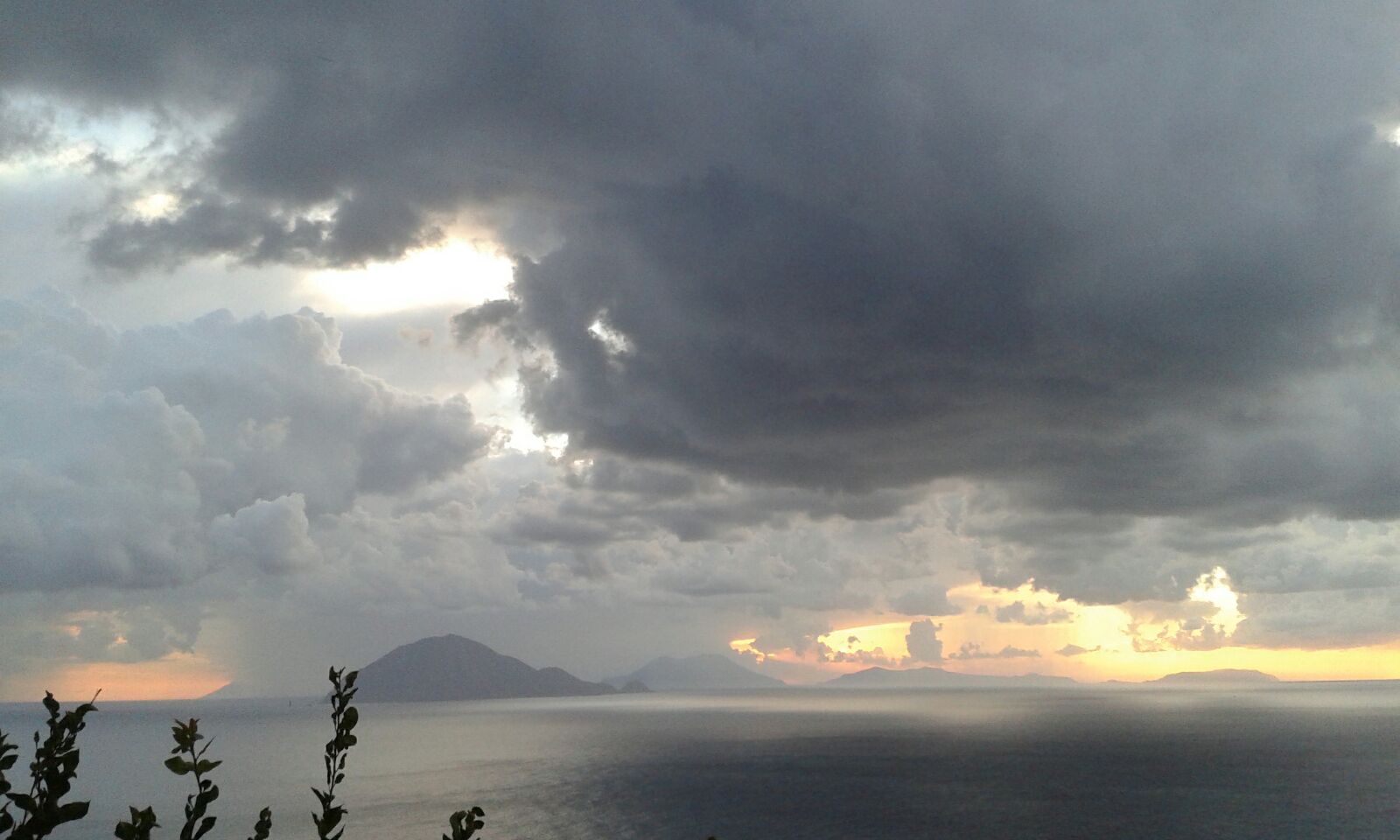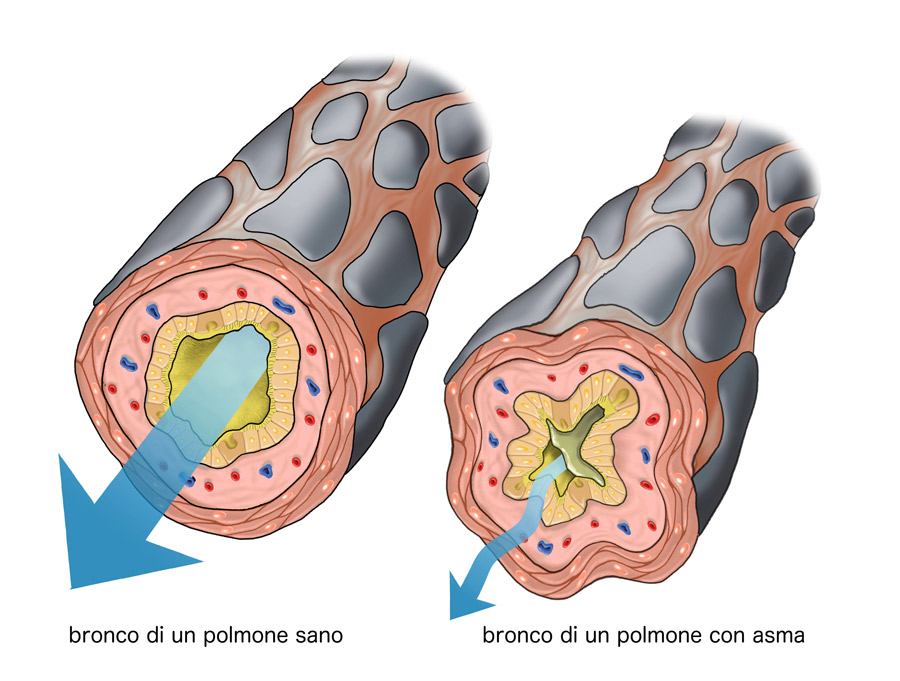A PROPOSITO dell’ASMA che può insorgere nel corso dei TEMPORALI e delle piogge intense durante le stagioni polliniche, soprattutto in primavera.
STORIA in BREVE degli STUDI sul THUNDERSTORM related asthma (and Respiratory Allergy).
L’ultimo lavoro della letteratura scientifica medica sull’asma correlato con l’insorgenza di temporali durante la stagione pollinica è questo nostro manoscritto appena pubblicato su Clinical and Experimental Allergy (rivista ufficiale della British Society of Allergy and Clinical Immunology che già nel 2005 aveva dedicato (vedi in basso) la copertina di un issue alle nostre osservazioni relative a questi eventi:
Clin Exp Allergy. 2016 Jan 14. doi: 10.1111/cea.12709. [Epub ahead of print]
Thunderstorm related asthma: what happens and why.
D’Amato G1, Vitale C2, D’Amato M2, Cecchi L3, Liccardi G1, Molino A2, Vatrella A4, Sanduzzi A2, Maesano C5, Annesi-Maesano I5.
Abstract
The fifth report issued by the Intergovernmental Panel on Climate Change forecasts that greenhouse gases will increase global temperature as well as the frequency of extreme weather phenomena. An increasing body of evidence shows the occurrence of severe asthma epidemics during thunderstorms in the pollen season, in various geographical zones. The main hypotheses explaining association between thunderstorms and asthma claim that thunderstorms can concentrate pollen grains at ground level which may then release allergenic particles of respirable size in the atmosphere after their rupture by osmotic shock. During the first 20-30 minutes of a thunderstorm, patients suffering from pollen allergies may inhale a high concentration of the allergenic material that is dispersed into the atmosphere, which in turn can induce asthmatic reactions, often severe. Subjects without asthma symptoms, but affected by seasonal rhinitis can also experience an asthma attack. All subjects affected by pollen allergy should be alerted to the danger of being outdoors during a thunderstorm in the pollen season, as such events may be an important cause of severe exacerbations. In the light of these observations, it is useful to predict thunderstorms and thus minimise thunderstorm-related events. This article is protected by copyright. All rights reserved.
This article is protected by copyright. All rights reserved.
Come è noto da molti anni ci interessiamo all’allergia respiratoria da pollini ed abbiamo pubblicato molti lavori su riviste mediche internazionali. Oltre ai lavori abbiamo pubblicato un libro edito nel 1991 dalla Blackwell Scientific Publications di Oxford, che è stato un grande successo editoriale:
D’Amato G, Spieksma F, Bonini S, eds. Allergenic pollen and pollinosis in Europe.Oxford: Blackwell Scientific Publications 1991;113-118.
Tra gli altri lavori pubblicati nel libro citiamo questo, nel quale già parlavamo, relativamente alla pollinosi da Parietaria, dei corpi di Ubisch e del microparticolato atmosferico veicolante allergeni soprattutto in condizioni di umidità atmosferica: D’Amato G, Ruffilli A, Ortolani C. Allergenic significance of Parietaria (pellitory-of-the-wall) pollen. In D’Amato G, Spieksma F, Bonini S, eds. Allergenic pollen and pollinosis in Europe.Oxford: Blackwell Scientific Publications 1991;113-118.
Le osservazioni pubblicate nei manoscritti e nel libro vennero ritenute di tale interesse dalla European Academy of Allergy and Clinical Immunology da affidarmi la chairmanship della commissione di EAACI su “Aerobiology and pollen allergy in Europe ” e, coordinando un gruppo di esperti europei, abbiamo pubblicato ben due position papers ufficiali sulle caratteristiche delle allergie da pollini in Europa. La prima è D’Amato G, Spieksma FThM, Liccardi G, et al. Pollen-related allergy in Europe. Position paper of the European Academy of Allergology and Clinical Immunology. Allergy 1998;53:567-578 Nella seconda position paper , del 2007, descriviamo le caratteristiche della Thunderstorm-related asthma: D’Amato G., Cecchi L., Bonini S., Nunes C., Annesi-Maesano I, H. Behrendt, Liccardi G., Popov T., van Cauwenbergh.: Allergenic pollen and pollen allergy in Europe. Allergy 2007;62:976-90 .
In parallelo ci siamo interessati all’air pollution, alle variazioni climatiche ed ai loro rapporti con le allergie da pollini, pubblicando numerosi lavori su questo argomento Qui solo alcuni di questi :
D’Amato G. Airborne paucimicronic allergen-carrying particles and seasonal respiratory allergy. Allergy 2001;56:1109-11
D’Amato G. Environmental urban factors (air pollution and allergens) and the rising trends in allergic respiratory diseases. Allergy 2002;57 (suppl):30-33.
D’Amato G,Liccardi G, D’Amato M, Holgate ST Environmental risk factors and allergic bronchial asthma Clin Exp Allergy 2005;35:1113-1124
In particolare, con l’egida dell’European Respiratory Society, venne pubblicata una monografia: D’Amato G., Holgate ST.”The Impact of air pollution on respiratory health” Monograph of European Respiratory Society 2002, con il contributo di venti scuole europee su vari aspetti di questa patologia, compreso la thunderstorm asthma.
Abbiamo poi pubblicato lavori molto approfonditi su questi argomenti sotto l’egida della World Allergy Organization:.
D’Amato G, Holgate ST, Pawankar R, Ledford DK, Cecchi L, Al-Ahmad M, Al-Enezi F, Al-Muhsen S, Ansotegui I, Baena-Cagnani CE, Baker DJ, Bayram H, Bergmann KC, Boulet LP, Buters JT, D’Amato M, Dorsano S, Douwes J, Finlay SE, Garrasi D, Gómez M, Haahtela T, Halwani R, Hassani Y, Mahboub B, Marks G, Michelozzi P, Montagni M, Nunes C, Oh JJ, Popov TA, Portnoy J, Ridolo E, Rosário N, Rottem M, Sánchez-Borges M, Sibanda E, Sienra-Monge JJ, Vitale C, Annesi-Maesano I. Meteorological conditions, climate change, new emerging factors, and asthma and related allergic disorders. A statement of the World Allergy Organization
World Allergy Organization Journal; 2015;8(1):25.
D’Amato G, Baena-Cagnani CE, Cecchi L, Annesi-Maesano I, Nunes C, Ansotegui I, D’Amato M, Liccardi G, Sofia M, Canonica WG. Climate change, air pollution and extreme events leading to increasing prevalence of allergic respiratory diseases.
Multidiscip Respir Med; 2013;8(1):12.
Nel giugno 2004 osservammo in Napoli una microepidemia di asma insorta in concomitanza con un temporale durante la stagione pollinica. Si trattava di sette pazienti adulti, tutti con monosensibilizzazione agli allergeni di parietaria (erbaccia della famiglia delle urticacee responsabile di allergie respiraorie (rinite ed asma) in oltre il 30 % degli abitanti di Napoli e delle zone costiere della campania). Pubblicammo quella nostra osservazione (LA PRIMA in ASSOLUTO nell’Area mediterranea) sul British Medical Journal, lo stesso Journal che aveva pubblicato l’osservazione di autori inglesi su un evento occorso a Londra e nel quale diversi pazienti, allergici alle graminacee, erano stati coinvolti in corso di un temporale. La nostra osservazione è la seguente:
D’Amato G, Liccardi G, Viegi G, Baldacci S. Thunderstorm-associated asthma in pollinosis patients. BMJ website January 2005 (https://bmj.bmjjournals.com/cgi/eletters/309/6947/131/c
Le osservazioni di autori inglesi ed australiani sono le seguenti (pubblicazioni che abbiamo SEMPRE CITATO nei nostri lavori) :
Packe GE, Ayres JG. Asthma outbreak during a thunderstorm. Lancet 1985;ii:199-204.;
Suphioglu C, Singh MB, Taylor P, Knox RB. Mechanism of grass-pollen-induced asthma. Lancet 1992;339:569-72;
Knox RB. Grass pollen, thunderstorms and asthma. Clin Exp Allergy 1993;23:354-356;
Bellomo R,Gigliotti P,Treloar A,Holmes P,Suphioglu C,Singh MB.Two consecutive thunderstorm associated epidemic of asthma in Melbourne. Med J Aust 1992;156:834-837.
Murray, V., Venables, K., Laing-Morton, T., Partridge, M., Williams, D. Epidemic of asthma possibly related to thunderstorms. BMJ, 1994;309, 131-132.
Thames Regions Accident and Emergency Trainer Association, Davidson AC,Emberlin J,Cook AD,Venables KM. A major outbreak of asthma associated with a thunderstorm. BMJ 1996;312:601-604.
Celenza A, Fothergill J, Kupek E, Shaw RJ. Thunderstorms associated asthma: A detailed analysis of environmental factors. BMJ 1996;312:604-607.
Bauman A. Asthma associated with thunderstorm. BMJ 1996;312:590-591
Venables KM, Allitt U, Collier CG, et al. Thunderstorm-related asthma – epidemic 24/25 June 1994. Clin Exp Allergy 1997;27:725-736.
Newson R, Strachan D,, Archibald E, Emberlin J, Hardaker P, Collier C. Effect of Thunderstorms and airborne grass pollen on the incidence of acute asthma in England, 1990-1994.Thorax 1997;52:669-670.
Newson R, Strachan D,, Archibald E, et al.Acute asthma epidemics, weather and pollen in England, 1987-1994. Eur Resp J 1998;11:694-701
Girgis ST, Marks GB, Downs SH, Kolbe A, Car GN, Paton R. Thunderstorm-associated asthma in an inland town in southeastern Australia. Who is at risk? Eur Resp J 2000; 16: 3-8
Marks GB, Colquhoun JR,Girgis ST et al. Thunderstorm outflows preceding epidemics of asthma during spring and summer. Thorax 2001, 56:468-471. )
DIverse altre sono le nostre pubblicazioni su questo argomento:
D’Amato G, Liccardi G, Frenguelli G. Thunderstorm-associated asthma in pollinosis patients. Allergy 2007;62:11-16
Dal momento che su JACI un lavoro su questo argomento non citava le nostre pubblicazioni e non riconosceva che anche la Parietaria, rompendosi in atmosfera per shock osmotico nei primi minuti di un temporale, potesse determinare l’insorgenza della Thunderstorm asthma, inviammo una lettera a JACI che la pubblicò (D’Amato G, Cecchi L, Liccardi G Thunderstorm-related asthma: not only grass pollen and spores. JACI 2008;121:537-538).
Abbiamo poi osservato e descritto un caso UNICO di una signora che per ben tre volte i tre anni diversi, è stata ricoverata in rianimazione, sempre durante il mese di maggio, perchè si era trovata in strada durante l’insorgenza di un improvviso temporale.
D’Amato G, Cecchi L, Annesi-Maesano I.A trans-disciplinary overview of case reports of thunderstorm-related asthma outbreaks and relapse.Eur Respir Rev. 2012 Jun 1;21(124):82-7.
Durante il terzo episodio la signora era in gravidanza al quinto mese e venne intubata e tenuta in coma farmacologico per una settimana, trattata con forti dosi di cortisonici, teofillinici e beta2stimolanti per via endovenosa. Migliorò però solo con la somministrazione endovenosa di solfato di magnesio. Il caso unico nella letteratura mondiale è descritto in questo lavoro: D’Amato G, Corrado A, Cecchi L, Liccardi G, Stanziola A, Annesi-Maesano I, D’Amato M .A relapse of near-fatal thunderstorm-asthma in pregnancy. Eur Ann Allergy Clin Immunol. 2013 May;45(3):116-7.
Prof. Gennaro D’Amato
Docente Universitario di Malattie Respiratorie. Chairman Committee and Task Force on “Climate change, biodiversity and Allergy” World Allergy Organization. Primari Emerito Divisione di Malattie Respiratorie e Allergiche, Azienda Ospedaliera di Rilievo Nazionale ad Alta Specialità A.Cardarelli, Napoli
Direttore Centro Studi Salute e Ambiente, Napoli . gdamatomail@gmail.com




